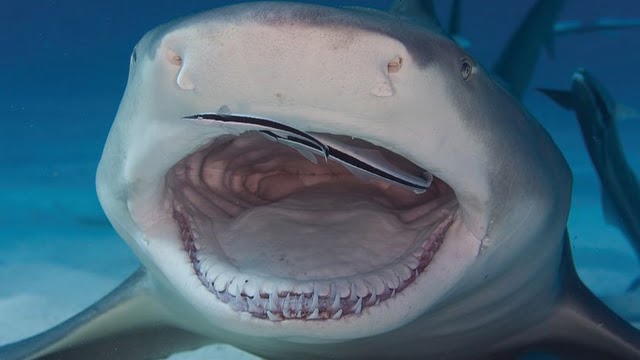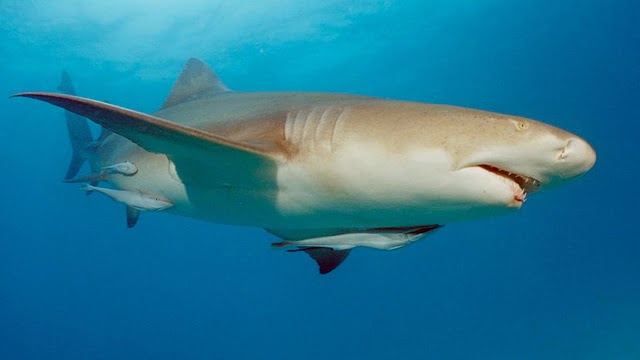Quck answer
The Lemon Shark is known for being one of the more docile species of sharks, making it relatively friendly towards humans. They are often found in shallow waters and are not known to be aggressive towards humans unless provoked or threatened. However, it is important to remember that they are still wild animals and can be dangerous if not treated with respect. It is crucial to follow safety guidelines when swimming or diving in areas where Lemon Sharks are present. Overall, while they may not be as feared as other shark species, it is still important to exercise caution and respect their natural habitat.
Wild Animals

Despite its intimidating appearance, there have only been ten recorded attacks on humans by the lemon shark, and none of them were fatal. Jim Abernethy/Barcroft Media/Getty Images
When you think of a shark, you probably don’t imagine a laid-back creature that enjoys socializing, but the lemon shark (Negaprion brevirostris) is exactly that. This yellow-colored giant prefers to avoid aggression and is quite sociable.
Lemon sharks live in subtropical coastal waters and can grow up to 10 feet (3 meters) in length, weigh up to 551 pounds (250 kilograms), and live up to 30 years. They have a unique skin color for a shark and can be identified by their blunt snout and two similar-sized triangular fins on their back.
Now That’s Small
Not all sharks are large and intimidating. The dwarf lantern shark (Etmopterus perryi) is the smallest shark in the world and can fit in the palm of your hand. When fully grown, it measures just under 8 inches (20 centimeters).
Why Are They Yellow?
Although lemon sharks are not as brightly yellow as their name suggests, their yellowish-brown hue is still noticeable and serves as camouflage against the sandy seafloor, making it easier for them to catch prey.
What Do They Eat?
Lemon sharks primarily feed on bony fish, crustaceans, and occasionally seabirds. They are also part of the 1% of fish that practice cannibalism, with adult lemon sharks known to prey on smaller lemon sharks or babies.
While we are not on their menu, lemon sharks are hunted commercially and recreationally. Their fins are sold for shark fin soup, an illegal delicacy, and their skin is sold for leather.

A lemon shark swims in the Atlantic Ocean off the coast of Grand Bahama Island.
Reinhard Dirscherl/ullstein bild/Getty Images
Are Lemon Sharks Dangerous?
Lemon sharks are frequently found in subtropical shallow waters near swimmers, surfers, and divers. However, according to the International Shark Attack File, there have only been ten documented attacks on humans by lemon sharks, and none of them were fatal. While they may seem friendly, it’s important to remember that lemon sharks are predators and can still bite when frightened.
They Enjoy Socializing
Although they don’t exactly go out for a night on the town, there is growing evidence that many sharks, including the lemon shark, are sociable and often hang out in groups. “Juvenile lemon sharks do show evidence of being social, both in captive and wild settings. This is most likely defensive and increases their chance of seeing an incoming predator. However there may be other advantages as well. The adults appear to be less social, but again there do appear to be times (and locations), where they form groups,” explains Yannis Papastamatiou, an associate professor of biology at Florida International University, in an email interview.
Where Can Lemon Sharks Be Found?
Lemon sharks inhabit shallow subtropical waters with depths up to 300 feet (90 meters). They can be found in a vast area ranging from New Jersey’s coast in the U.S. to Southern Brazil, the Gulf of Mexico, and the Caribbean in the northwestern Atlantic Ocean. In the eastern Atlantic, they are found along the Senegal and Ivory Coast of Africa. They also live in the Northern Pacific, from the Gulf of California and Baja California to Ecuador.
When migrating, they move towards oceanic waters but prefer staying near the coast. At times, they may enter freshwater, but they cannot survive there for long.
Why Do Researchers Study Them?
Lemon sharks are a popular species for scientific studies due to their adaptability to captivity. They help researchers understand sharks better. The Bimini Sharklab, established by the late Dr. Samuel Gruber, is a major research station in Bimini, Bahamas. It has been a significant platform for many scientists worldwide, including Diego CardeГ±osa, a Florida International University postdoc fellow. Lemon sharks are abundant in Bimini, and Dr. Gruber’s team uses them as a model species for studying its behavior, physiology, ecology, and conservation.
What Is The Status of Lemon Sharks?
Diego CardeГ±osa studied with Dr. Gruber to monitor the growth and survival rate of juvenile lemon sharks and the impact of habitat loss on their population. According to him, the IUCN Red List of Threatened Species lists lemon sharks as “Near Threatened.” They face significant threats from overfishing and habitat loss. Lemon sharks are caught in commercial, artisanal, and recreational fisheries across their habitat range. Habitat loss due to mangrove ecosystem degradation is another significant threat as they use these habitats as nursery grounds.
Lemon sharks are breaking color stereotypes, and their study helps enhance our understanding of sharks. If you plan to swim with sharks on your next adventure vacation, you may get to socialize with one of nature’s giant yellow marvels.
FAQ
1. What is a lemon shark?
A lemon shark is a type of shark that is found in tropical waters, particularly in the western Atlantic Ocean. They are named for their yellowish-brown colour, which is similar to that of a lemon.
2. Are lemon sharks dangerous to humans?
Lemon sharks are generally not considered to be dangerous to humans. While they are capable of biting if provoked or threatened, they are known for their relatively docile nature and are not typically aggressive towards people.
3. What do lemon sharks eat?
Lemon sharks are primarily carnivores and feed on a variety of prey including fish, crustaceans, and squid. They have been known to eat smaller sharks as well.
4. How big do lemon sharks get?
Lemon sharks can grow up to 10 feet in length and weigh up to 400 pounds. However, the average size of an adult lemon shark is around 7 feet in length and 130-150 pounds in weight.
5. Where can I find lemon sharks?
Lemon sharks are typically found in shallow waters near coral reefs, mangroves, and other similar environments in the western Atlantic Ocean. They are also found in the Gulf of Mexico and the Caribbean Sea.
6. Are lemon sharks endangered?
Lemon sharks are currently classified as near threatened by the International Union for Conservation of Nature (IUCN). While they are not considered to be critically endangered, their populations are declining due to overfishing and habitat loss.
7. How do lemon sharks reproduce?
Lemon sharks reproduce sexually and give birth to live young. Females typically give birth to 4-17 pups after a gestation period of 10-12 months.
8. What is the lifespan of a lemon shark?
The lifespan of a lemon shark is not well known, but it is estimated to be around 25-30 years in the wild.





Leave a Reply